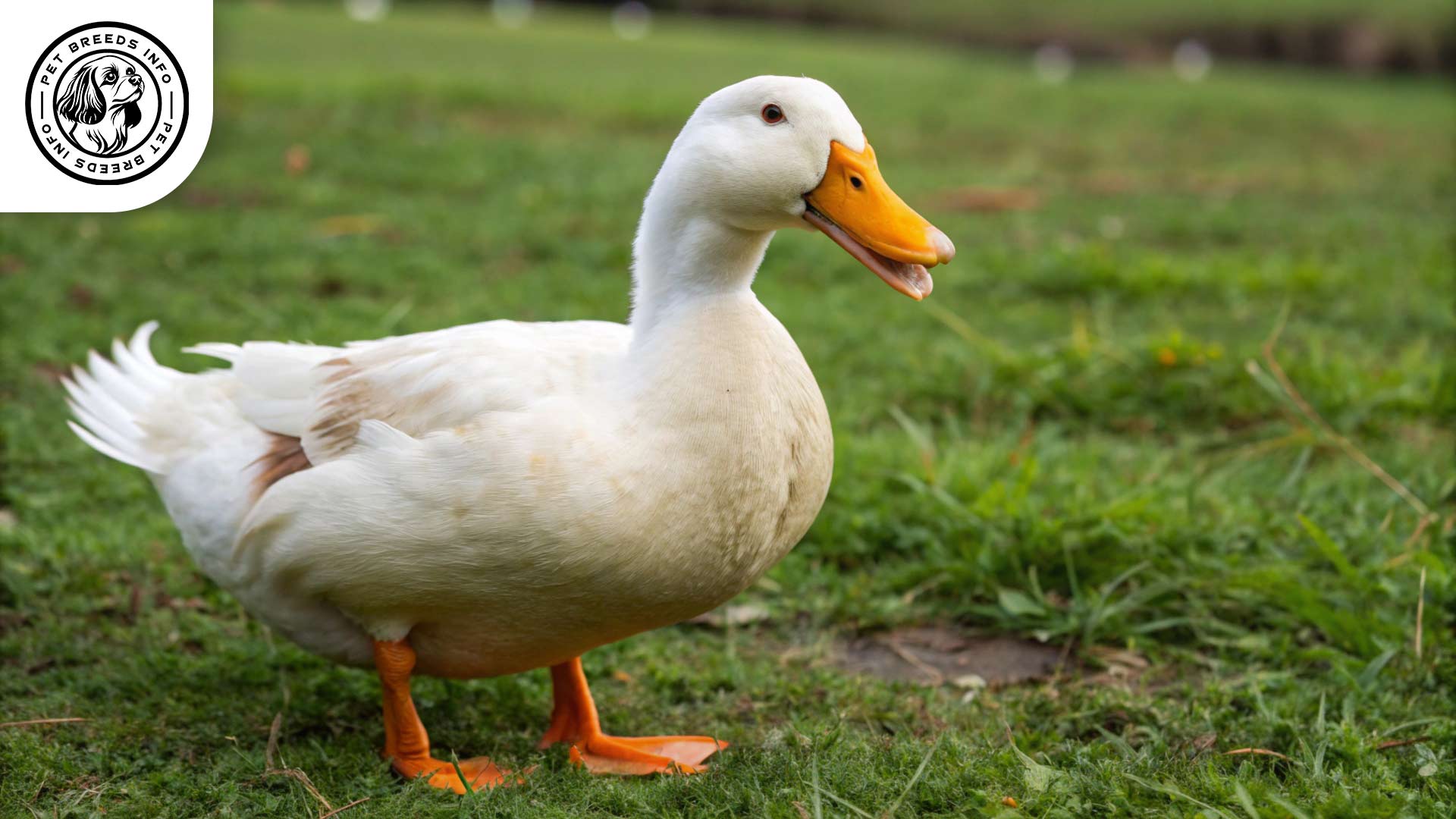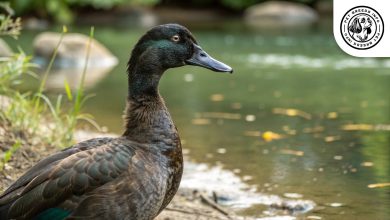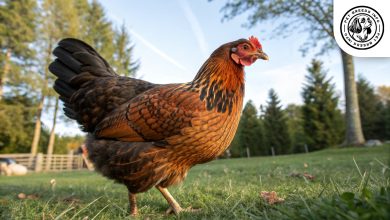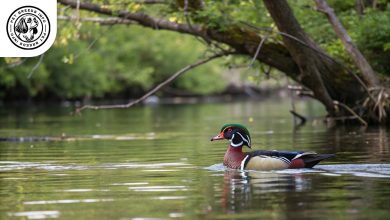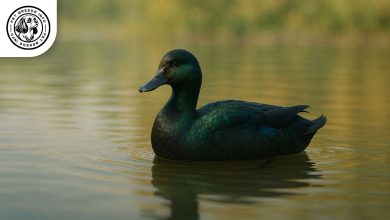Call Duck Breed: Personality, Lifespan, Food & Care
General Introduction of the Breed
The Call Duck is a small domesticated duck breed originally from the Netherlands. It is known by the name “Call Duck” in English and “Kleine Eend” in Dutch. This breed was historically used as a decoy duck for hunters, with hunters using their loud, high-pitched calls to lure wild ducks into traps. Over time, Call Ducks became popular as ornamental and companion ducks due to their friendly nature and charming appearance.
Table of Contents
| Common Name: | Call Duck |
| Scientific Name: | Not explicitly mentioned in the text. |
| Origin: | Netherlands |
| Size: | Males: approximately 1 to 1.5 pounds (450 to 700 grams); Females: slightly less. One of the smallest domesticated duck breeds. |
| Lifespan: | 7 to 10 years with proper care. |
| Talking Ability: | Known for their loud, high-pitched calls; described as excellent communicators and particularly vocal. |
| Colors: | White, gray, blue, pied, silver, and snowy variations. |
| Noise Level: | Vocal; known for their loud, high-pitched calls. |
| Social Behavior: | Affectionate and bond well with owners; get along well with children and other pets (with proper introduction); thrive on social bonds. |
Physical Characteristics
Call Ducks are among the smallest domesticated ducks, with males (drakes) weighing approximately 1 to 1.5 pounds (450 to 700 grams) and females (hens) slightly less. They have a compact and rounded body with a short neck, making them one of the most distinctive duck breeds.

Their plumage comes in various colors, including white, gray, blue, pied, silver, and snowy variations. Their bills are short and slightly upturned, adding to their cute appearance.
Call Ducks have round, dark eyes that enhance their expressive look. Their ears are not externally visible, as is typical in ducks. Their tail is short and slightly upward-curved, contributing to their compact body structure. Due to their small size and bright appearance, they are often mistaken for toy ducks.
Read More: Lutino Cockatiel
Personality and Temperament
Call Ducks are highly intelligent and can quickly learn basic cues from their owners. They are very energetic and require space to explore, swim, and forage.
They are extremely affectionate ducks that bond well with their owners. Many Call Ducks enjoy being handled and interacting with humans.
Due to their friendly nature, they get along well with children and other pets, provided they are introduced properly. They are known for their playful behavior and are particularly vocal, making them excellent communicators.
Their sensitivity to environmental changes means they need a safe, warm enclosure during extreme weather conditions.
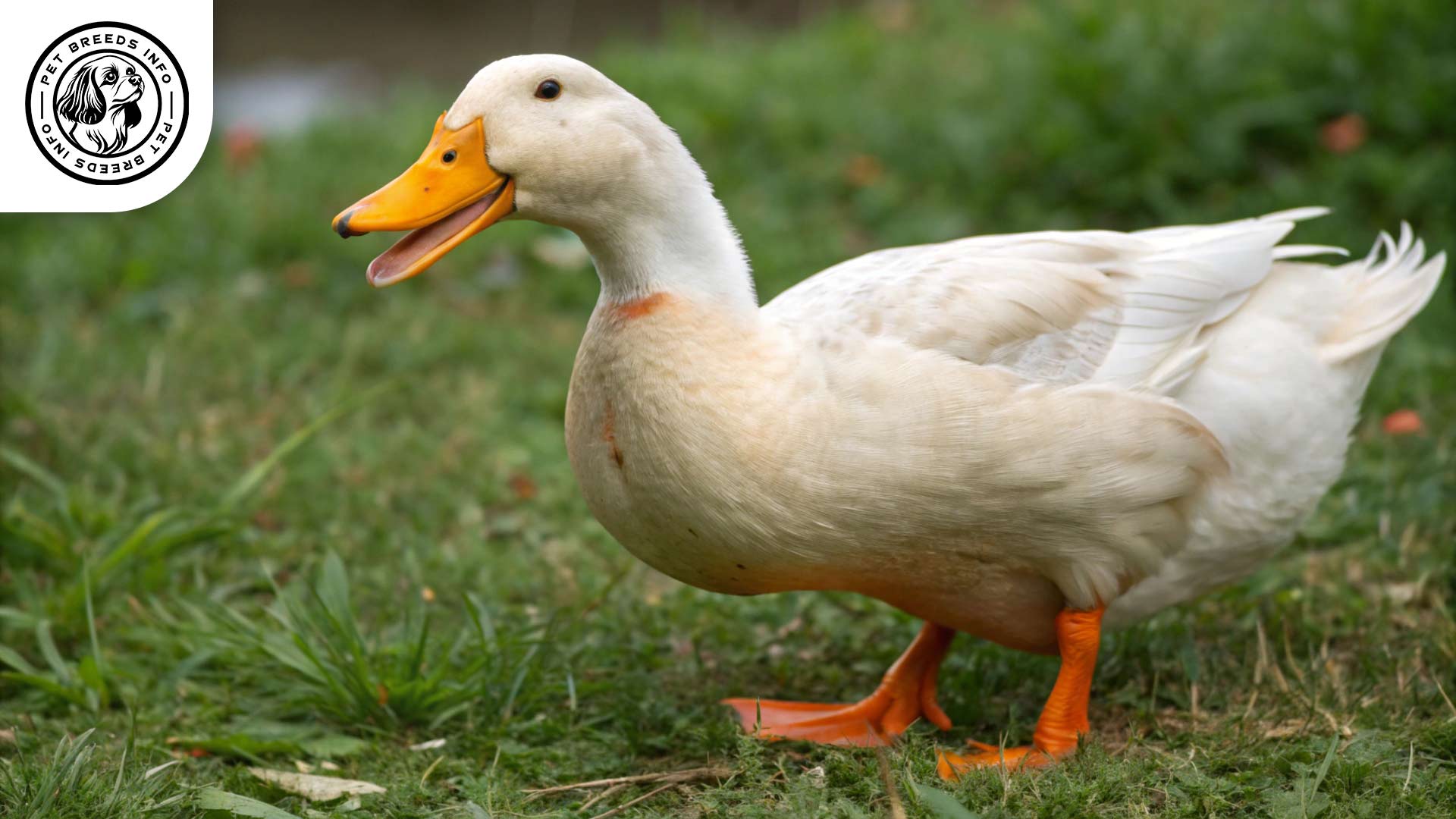
Care and Maintenance Requirements
Call Ducks are active birds that require plenty of movement. Access to a pond or small water source is essential for their overall well-being.
They can adapt to different living environments but thrive best in an outdoor space with a water body. They can be kept in a backyard but need proper shelter for protection against predators and harsh weather.
This breed requires minimal grooming. They preen themselves frequently, but owners should provide access to clean water for bathing. Call Ducks do not shed heavily.
They are especially sensitive to extreme colds and excessive heat, so proper housing is necessary. Their enclosure should be well-ventilated and insulated, depending on the climate.
Regular hygiene practices include checking for overgrown nails, maintaining their shelter’s cleanliness, and ensuring fresh water availability at all times.
Diet and Nutrition
A balanced diet consisting of high-quality duck pellets, grains, and vegetables is ideal for Call Ducks. They enjoy eating leafy greens, peas, and small insects.
Avoid feeding them bread, chocolate, onions, and processed foods, as these can be harmful.
These ducks should be fed in moderate portions, typically twice a day, with access to fresh water at all times.
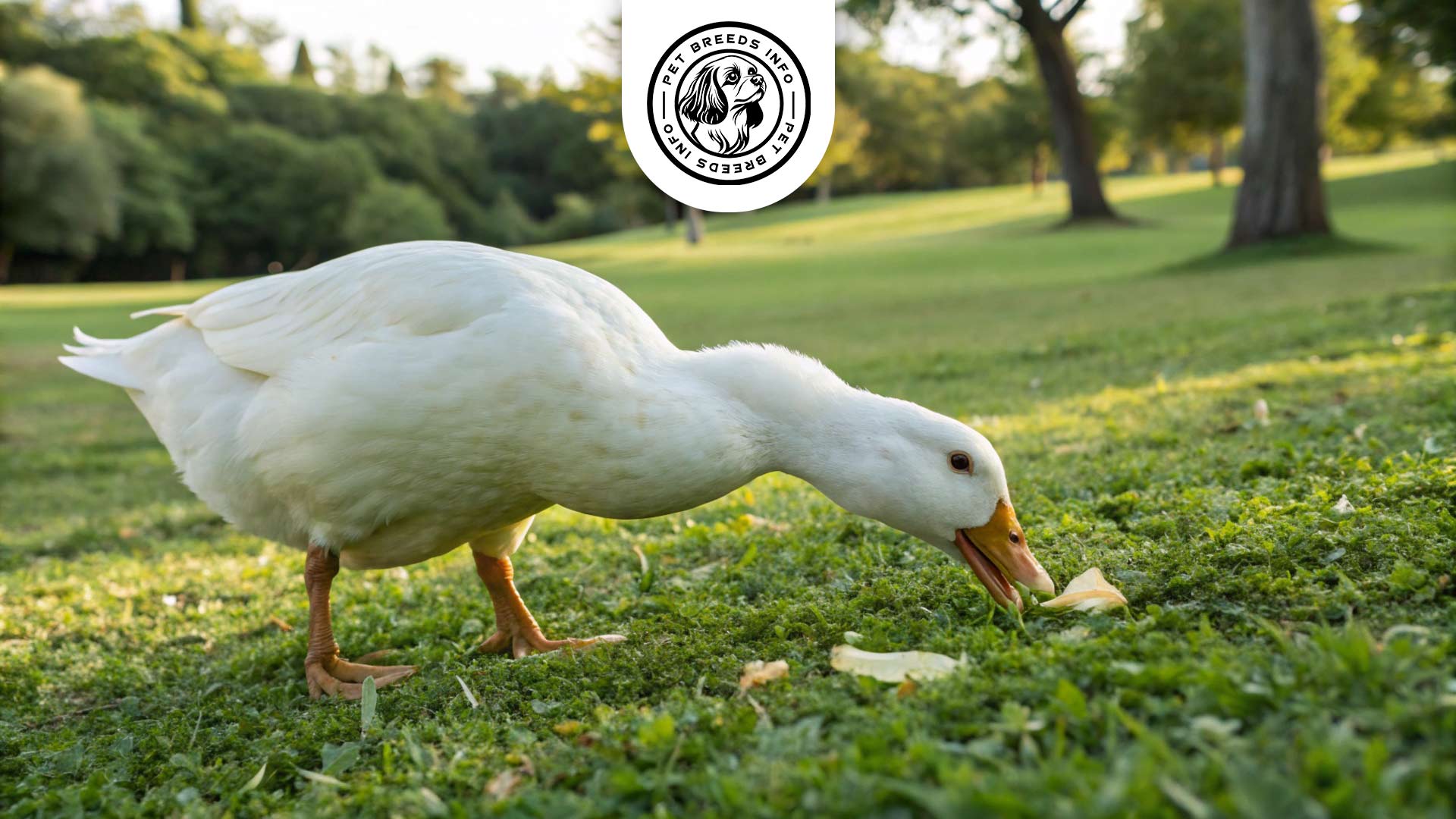
Health and Common Medical Issues
Call Ducks are generally healthy, but they can be prone to respiratory infections, bumblefoot (foot infections), and obesity if not managed properly.
They should be kept away from dirty or stagnant water sources to avoid bacteria-related illnesses.
Their average lifespan ranges between 7 to 10 years with proper care.
Routine vaccinations may not always be necessary, but regular vet checkups are recommended to ensure their health and well-being.
Read More: Lilian’s Lovebird
Training and Behavior Management
Call Ducks are relatively easy to train, especially with positive reinforcement. They can be taught basic recall commands and are known to follow their owners.
They respond well to treats and rewards. Consistency in training is key to reinforcing good behaviors.
Early socialization helps them get accustomed to human interaction, making them more comfortable and friendly.
Using a calm and patient approach while training ensures they develop trust and confidence.
Interaction with Other Animals and Humans
Call Ducks are excellent companions for families with children due to their gentle and friendly nature.
They interact well with other ducks and poultry but should be introduced gradually to avoid stress.
They are suitable for both individuals and families, as they enjoy attention and companionship.
While they can be independent at times, they thrive on social bonds and prefer not to be left alone for long periods.
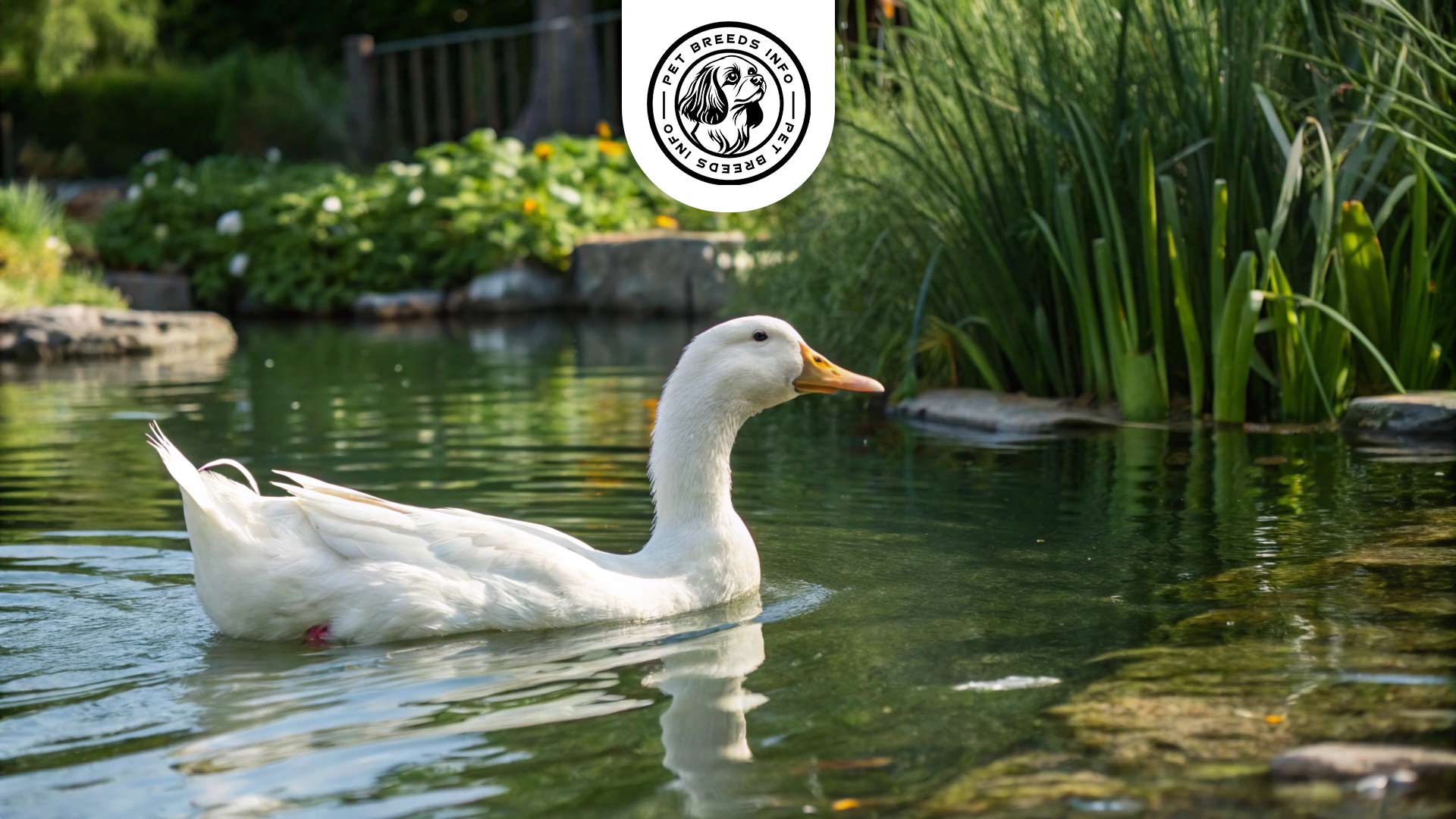
Price and Availability
The cost of a Call Duck varies based on the breeder, coloration, and availability. The price usually ranges between $20 to $50 per duck.
When purchasing, it is essential to source them from reputable breeders or adoption organizations to ensure they are healthy and well-cared for.
Owners should consider the cost of proper housing, food, and medical care before adopting a Call Duck.
Conclusion and Final Thoughts
Call Ducks make excellent pets for those looking for a small, friendly, and active duck breed. They are ideal for individuals and families willing to provide them with space, water, and social interaction.
They thrive in environments where they have access to clean water, shelter, and human companionship.
Potential owners should be aware of their vocal nature, care requirements, and social needs before adopting them.
Overall, Call Ducks are lively, affectionate, and easy to care for, making them a fantastic choice for beginner duck owners and experienced poultry enthusiasts alike.
Read More: Toulouse Goose
FAQ
What is a Call Duck known for?
Call Ducks are known for their small size and loud, high-pitched calls, historically used to lure wild ducks.
Are Call Ducks good pets?
Yes, they are considered excellent pets due to their friendly nature and ability to bond with owners.
How big do Call Ducks get?
Males typically weigh 1 to 1.5 pounds, and females are slightly smaller, making them one of the smallest duck breeds.
What do Call Ducks need to live comfortably?
They need space to explore, access to a water source, proper shelter, and social interaction.
How long do Call Ducks typically live?
With good care, their average lifespan is between 7 to 10 years.
